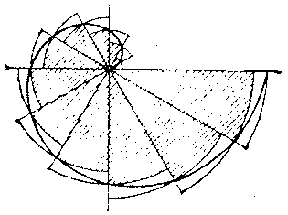
#Calculus with infinitesimals full
Now, while that may seem straightforward, it actually takes most calculus courses a full half-semester to explain that concept. Here, the slope is 1.5, which means that the slope is going up when moving from left to right. You can see the slope of the graph at x = 0.25 below:
#Calculus with infinitesimals plus
So, at any point on the graph, the slope will be two times the x value plus one. This can be done by dividing both sides of the equation by dx. Therefore, if we solve for dy/dx, then we will know the slope at any given point. Since dy and dx represent infinitely small relative changes, then their ratio represents the slope at a particular point. So what can we do with this? Well, the slope of the graph at any given point is given by the relative changes in y and x at that particular point. Therefore, we can say that dx 2 is just too small to be worth considering and can be dropped. Therefore, they can be essentially treated as non-existent. If one differential is infinitely small, then two of them multiplied together you can think of as another order of infinity smaller. One other notion in calculus is that, if you multiply two differentials (or raise a single differential to a power), they can essentially be treated as non-existent. If you subtract the original equation from both sides you get

If you remember your algebra, you can simplify it as follows: So, we can take the equation above and perform the replacements. The parentheses are important, because otherwise you might wind up making order-of-operations errors. So, every x will become ( x + dx) and every y will become ( y + dy). Now, all you have to do to discover an equation relating the variables and their infinitesimal changes is simply replace every instance of the variable with the variable plus its change. This is the infinitesimal amount that x changes, and dy is the infinitesimal amount that y changes correspondingly. This is known as the “differential of x” or just pronounced as “dee ex”. This is NOT “ d times x”, but a single quantity dx represented by two letters. If we have the variable y, the change in that variable will be represented by dy. So, if we have the variable x, the change in that variable will be represented by dx. For every variable in the equation, we will create a second variable that represents a change in that variable, and put a “d” in front of it. There is a simple technique that can be applied to study infinitesimals. In fact, these changes are so small that they are infinitely small and are known as infinitesimal changes, or just infinitesimals. Actually, calculus only measures extremely small changes. However, calculus doesn’t measure large changes. So, as x changes, how much does y change as a result? This is why it is called “differential calculus,” because we are looking at how the changes (i.e., the differences) behave. While algebra studies the relationships between the values in an equation (i.e., what is y when x is a particular number), calculus is the study of the relative changes of those same variables. We will focus on differential calculus here. Calculus is split into two parts, “differential calculus” and “integral calculus,” which are just opposites of each other, much the same way that addition and subtraction are opposites of each other and multiplication and division are opposites of each other. To understand the simplicity and beauty of calculus, I am going to teach you some. We’ll get to the “why” towards the end of the article. Why? Because an 18th century bishop made fun of calculus professors. So why do students think it is so scary? The fact is, calculus is taught in such a convoluted way that the natural beauty of it is almost always greatly distorted. Would you be surprised if I told you that the essentials of calculus are actually very straightforward and simple? In fact, they are so simple that most people with a modest Algebra background can understand calculus easily.

Even the word itself incites panic in undergraduates everywhere. Share Facebook Twitter Print arroba EmailĬalculus often sends chills up the spines of students.


 0 kommentar(er)
0 kommentar(er)
